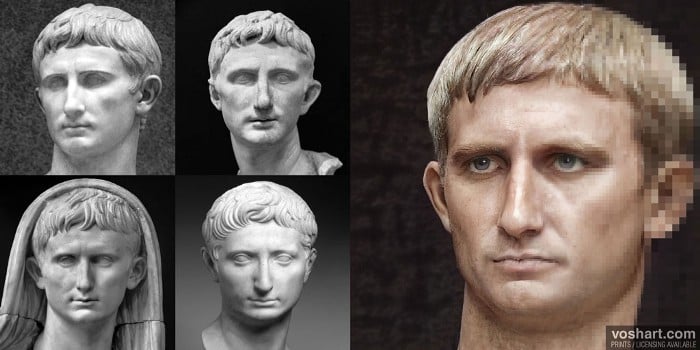...Some decisions were research-heavy, he tells Artnet News, explaining that he looked to the emperors’ birthplace and family lineage to guess at the tone of their skin (a subject of some scholarly debate).

Augustus. Courtesy of Daniel Voshart.
In fact, removing the coldness of the emperors’ likenesses required more than turning stone into flesh.
“It is easy to remove all expression and character from the original when making things photoreal. I tried really hard to keep that,” he says. “Florianus, for example. The bust I was using as source material didn’t have much academic consensus, but I thought the expression was fascinating. It had to be kept. The further an expression is from neutral the harder it is to keep photoreal.”
For previous projects, Voshart has also used machine learning to make portraits of Egyptian mummies and to render a series of figurative clay sculptures created by students at the New York Academy of Art into realistic faces.
His creations are just the tip of the iceberg when it comes to the kind of work being done online. Indeed, there are entire threads dedicated to using tools like Artbreeder to bring long-gone figures back to life. A quick scroll of one such thread on Reddit yields impressive, uncanny, and sometimes just plain creepy pictures of figures such as Caesar, Khurshudbanu Natavan, and even the Statue of Liberty.
Follow artnet News on Facebook:
Want to stay ahead of the art world? Subscribe to our newsletter to get the breaking news, eye-opening interviews, and incisive critical takes that drive the conversation forward.
SHARE

No comments:
Post a Comment